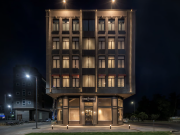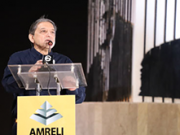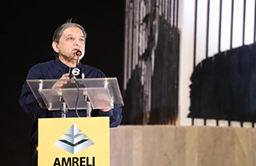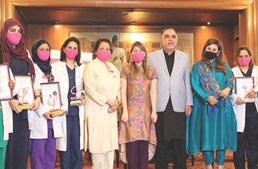The problem with Pakistan’s vehicle industry’s flat tire.
The nation has frequently failed to be successful in negotiating improved terms with automotive manufacturers for the export of goods produced locally.
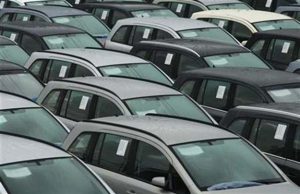
KARACHI:
Pakistan’s automotive sector, which had previously been destroyed by nationalisation, expanded briskly in the first decade of the twenty-first century. Even though the image may not seem particularly colourful right now. When Pakistan gained its independence, the automobile industry was very different from what it is now.
The majority of the aristocracy drove either British or American-made automobiles on the highways. Ford, Chevrolet, Mercedes, Morris, and Volkswagen were among the makes that were imported into the nation between 1947 and the late 1960s. Even the larger cities on the Sub-Continent, like Karachi, Bombay (modern-day Mumbai), and Dhaka, had these businesses with their own branches.
By the middle of the 1950s, European models had also arrived in this region of the world. In the 1960s, some of the nation’s largest importers created their own assembly facilities, where American-branded Ford trucks were put together. Trucks were the first vehicles to experience innovation and variety, and they also saw a rise in popularity, according to Mashood Ali Khan, an auto expert, in an interview with the Express Tribune.
Local part manufacturers, often known as second- and third-tier vendors, started to emerge during this period. The nation developed a network of small and medium-sized firms (SMEs) in the car industry by the late 1960s. However, economic policies in the late 1960s, a result of colonial repercussions and Mahbubul Haq’s functional inequality theory, brought inequality to both wings of Pakistan, which had a negative impact on the expansion of the industrial sector, according to him. “After the political upheaval of 1971, Zulfikar Ali Bhutto’s nationalisation strategy laid the groundwork for socialist economic policy, and reforms were implemented to promote growth. Despite the fact that the strategy was a common one at the time in many nations, this turned out to be another surprise for investors and manufacturers, Khan continued.
There was a pause in the growth trajectory that had begun in the 1950s, and many people fled the country in dismay. This failed nationalisation attempt had an impact on the automotive industry in addition to the corporate world.
developed a strong mistrust of the government,” he added. “Beginning in 1980, the government turned its attention back to the auto industry. This time, Japanese businesses were the first to enter the market. The first company to establish an assembly facility in Pakistan was Suzuki. As the Pakistani market grew in the early 1990s, Toyota and Honda entered the country. This signalled the start of the Japanese motor era, according to Khan. The entry of Japanese automakers gave local part producers a new opportunity, but Pakistan was unable to negotiate better conditions because of its recent history of nationalisation, which had shattered the faith of both domestic and foreign investors, the expert explained.
Pakistan could only request them to come under their own terms and conditions because they were desperate to restore industrial activity. In a perfect world, the government would have brought in the foreign firms with a long-term strategy in mind, where the firms would be required to start localising auto parts as well as exporting some models from this region. Pakistan may have also demanded terms that would have allowed Japanese investors to use Pakistani component producers in their supply chains. Though convincing them to do so was a significant accomplishment, our focus was on luring them into the Pakistani market rather than long-term planning, Khan noted. “At the same time, the government established a personal baggage and gift programme for Pakistanis living abroad, enabling them to bring a car home with them. Although this was a fantastic plan, traders abused it. They began trading the cars, which harmed the domestic auto industry because tens of thousands of cars were imported. This interfered with supply and demand for regional producers, which led to poor local auto market expansion,” he said.
The volume of the Pakistani automobile industry was 35,000 between 1999 and 2000. In the same time frame, 86,000 motorcycles were produced, compared to 913 and 1,460 trucks and buses, respectively. The Sports Utility Vehicle (SUV) culture did not exist at the time, Khan emphasised. “Korean automakers began selling automobiles in Pakistan starting in the year 2000, giving buyers of both passenger cars and commercial trucks access to new models and features. They were welcomed with open arms,” he said. “Around 60 motorbike manufacturers received licences from the government under Pakistan’s first auto policy for two-wheelers, which was implemented in the middle of the 2000s.
This was a breakthrough that would benefit the general public who lacked access to public transportation, particularly in Karachi, a port city. As the bike manufactures were from China, this was also the moment when Chinese businesses joined the market, according to Khan.
“About 2,000 motorcycles were produced in 1999. This signalled the start of a boom in the automobile industry. In the years 2005–2006, the nation manufactured about 170,000 automobiles. The car sector and the economy were both booming at the time, he continued. “Motorcycle sales reached the 500,000 level in the middle of the 2000s. Businesses were investing again at the time since the market was rising.




















